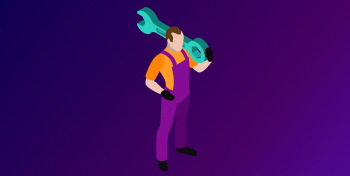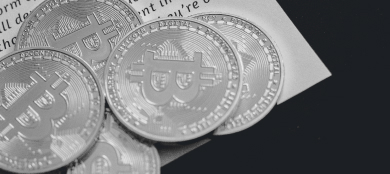The trend of Bitcoin popularity in social networks and in different markets has many reasons. Apart from the rising price of BTC and the huge market investments made by some of the world’s most prominent financial figures, this dominant digital asset is also making headlines due to an event known as halving. But what is Bitcoin halving?
What is BTC halving?
Halving, also known as halving the reward, is one of the most anticipated events in the cryptocurrency world. Bitcoin mining is a process in which miners get new coins by digging into a digital Bitcoin cave, using specialized mining equipment, as a virtual pickaxe.
Bitcoin miners must solve the network’s very complex mathematical equations to complete the “blocks” that are added to the Bitcoin chain. A block refers to a file that stores 1 megabyte (MB) worth of Bitcoin transactions. As more and more transactions are verified, the Bitcoin network also grows in size.
After solving these puzzles or successfully verifying transactions, which usually takes 10 minutes, the miners will receive BTC as a reward. Now, in a process called halving, the reward received by miners is halved after mining a set of 210,000 blocks, or roughly every four years.
How it works
The halving occurs after a set of 210,000 blocks is mined. In the early years of BTC, miners received 50 BTC for each verified block. After more BTC was mined in 2012, the reward of 50 BTC was halved, leaving miners with 25 BTC per block.
In 2016, a second set of 210,000 blocks was produced, and the reward halved again, leaving the miners with 12.5 BTC. The last halving of the Cue Ball occurred in May 2020, and after the third set of 210,000 blocks was mined, the reward was halved once again and is now 6.25 BTC per block.
How does halving affect the price of BTC?
Halving it affects the price of Bitcoin in different ways.
- The First Halving (2012)
After mining the first set of 210,000 blocks, the reward was reduced from 50 BTC to 25 BTC per block. Before the halving, BTC was sold at $12 per coin. A year later, its market sale price exceeded $960.
- The Second Halving (2016)
On July 9, 2016, bitcoin miners started receiving 12.5 BTC per block. Before the second halving, BTC was selling for almost $665, and a year later its market value reached a rapid growth of $2,550.
- Third halving (2020)
After mining the third set of blocks, the miners ‘ reward was halved to 6.25 BTC per block. On the last day of 2020, bitcoin was selling at a skyrocketing price of more than $29,000, a record high from last year.
The next halving is expected in 2024, after the production of block number 740,000. By this time, the miners will receive a reward of 3,125 BTC per block.
This list continues until the entire 21 million BTC is mined, and some cryptocurrency enthusiasts say it will continue until 2140. But who knows, right?
Why is Bitcoin halving happening?
After learning how Bitcoin halving works, you probably think, ” Is this fair to the miners who do all the hard work of mining new Bitcoin blocks?» If you are an avid fan and user of PTS, you probably know that its mysterious developer, under the pseudonym Satoshi Nakamoto, created BTC with a limited supply of 21 million coins.
At the time of writing, 88.83% of the total amount of BTC has already been produced. This means that only 2.3 million BTC remains to be mined. However, there is no guarantee that all 18.6 million BTC produced are in circulation in the markets today. In fact, a New York Times report mentions that about 20% of BTC is in lost or stuck wallets.
When the entire 21 million Bitcoins are mined, miners will no longer receive block rewards. They can only earn money from the commission for each confirmed transaction. While it is true that the reward of miners falls in half when the halving occurs, Bitcoin becomes increasingly scarce due to its limited supply, and the value of a single BTC continues to skyrocket over time. The rising price of Bitcoin is also motivating miners to keep mining.
What are the effects of halving BTC?
Bitcoin halving has different effects. Here are some of the notable advantages and disadvantages of this event.
- Miners
Bitcoin mining is known as one of the most effective ways to get shares of a crypto asset first-hand. On the other hand, performing a cryptocurrency mining operation can be very expensive, depending on whether you are an individual miner, or part of a mining pool. In any case, you will need powerful mining equipment, and specialized software that can meet the tedious and expensive block mining processes.
For some miners, a sudden reduction in mining rewards may seem less profitable. Due to the huge amount of investment they have put into powerful mining machines, the diminishing amounts of block rewards may not be enough to cover the cost of mining them. However, it is also important to note that this may not always be the case for every miner, due to the very volatile nature of Bitcoin.
- Traders
Although some miners don’t always like the idea of halving Bitcoin, Bitcoin enthusiasts, traders, and investors are looking forward to this event. Why? Because during this period in the cryptocurrency world, the number of coins generated by miners is decreasing. This means that the limited number of coins purchased paves the way for a sharp increase in the price of BTC when market demand increases. The higher demand and limited supply of this digital asset may provide traders with more market opportunities to sell BTC at higher prices.
Although we have seen this promising trend from the first, until the recent halving of Bitcoin, it is still important to remember that this volatile asset can quickly rise or devalue, depending on the market movements that may occur.
- Price of BTC
We mentioned earlier that cutting Bitcoin in half could raise its market price. However, this does not always happen, and we are not one hundred percent sure how high the price will be. After a few days, months, or even years, the price may rise sharply, and in the intervals between them, a drop may occur.
Also, will there be more interested people outside of the cryptocurrency world after halving? Will there be another bull run? Will there be new traders in the market? These are just some of the many questions that may come to mind, but again, we just need to wait and see which direction the Bitcoin price will go.
Bitcoin is known for its sharp price swings. So whether it halves or not, there’s nothing impossible about it. Investors can try to follow the price movement of BTC for a week or a month and decide when it is best for them to buy or sell, if they are ready to trade the cryptocurrency.
Is halving good or bad?
From what we discussed above, we learned that halving Bitcoin has different effects on its market price, miners, traders, and investors. It has its advantages and disadvantages. Like other assets and valuable commodities, the price of Bitcoin depends on supply and demand. However, for miners who receive a decreasing amount of rewards about every four years, this may not always be as motivating and enticing as the 50 BTC per block reward they could earn in the pre-halving era.
But after more than a decade of the Cue Ball’s existence on the market, its growing popularity and worldwide distribution has undoubtedly further increased its price. So we’ll leave it up to you to decide whether halving is good or bad.


